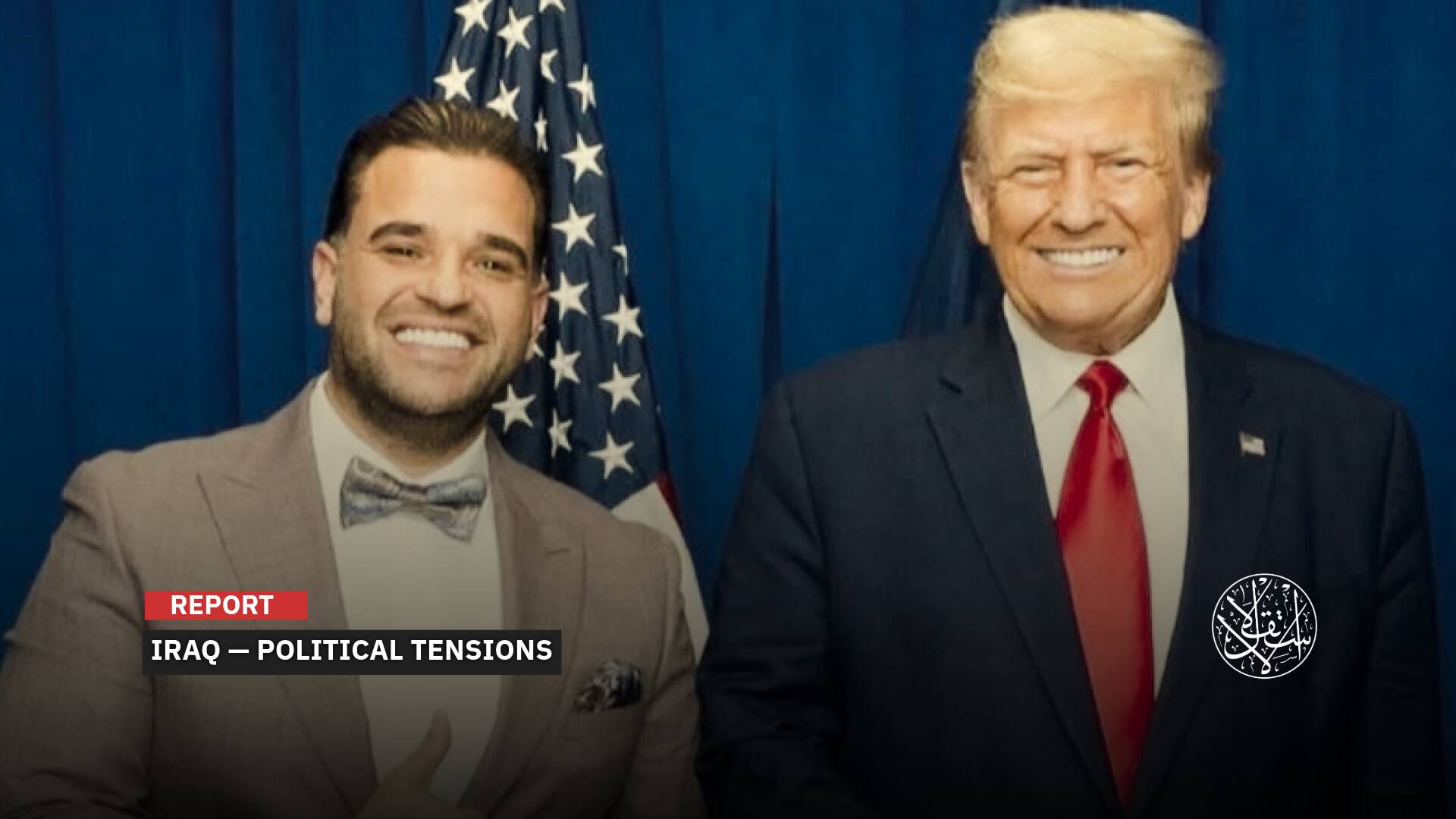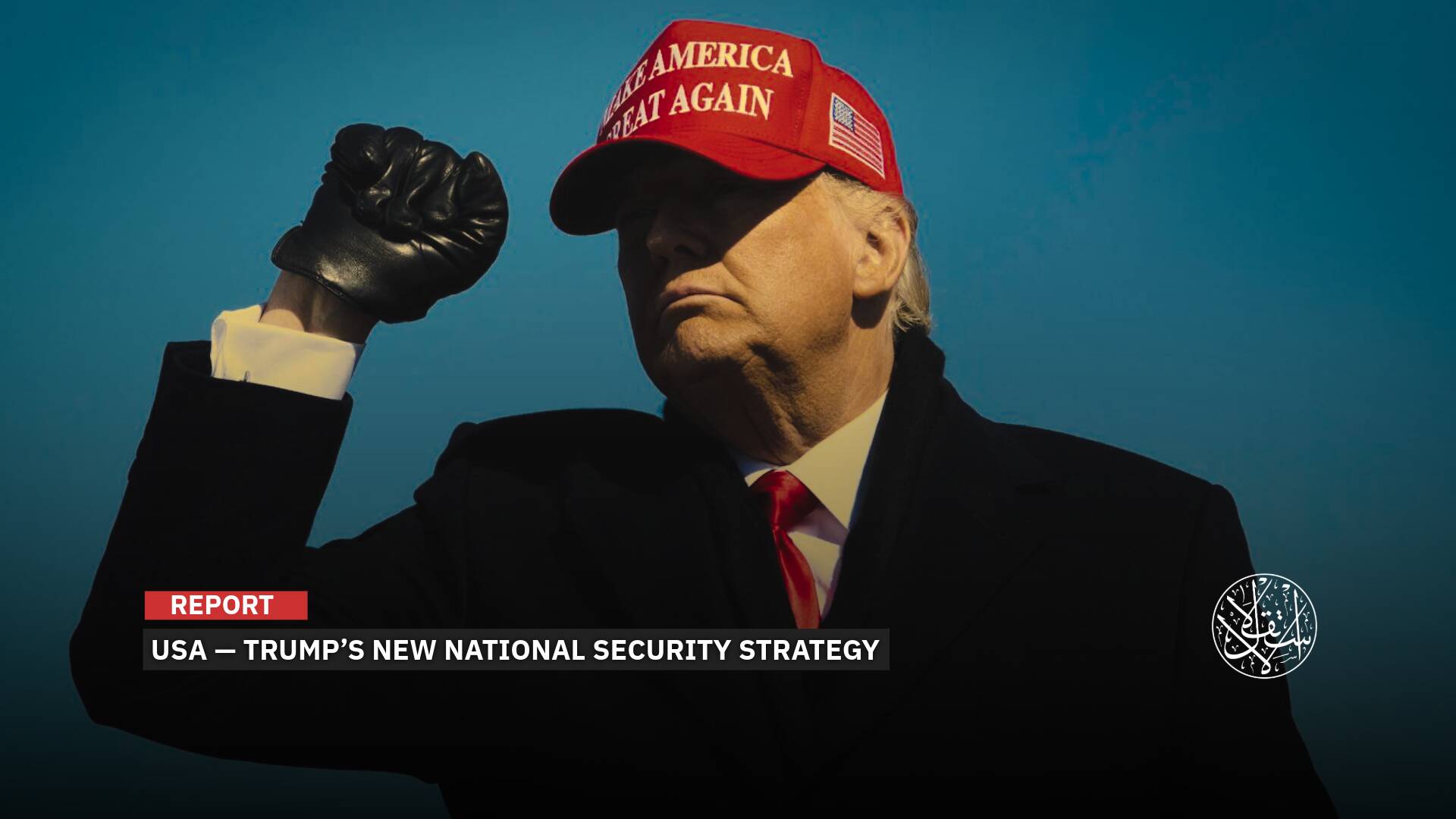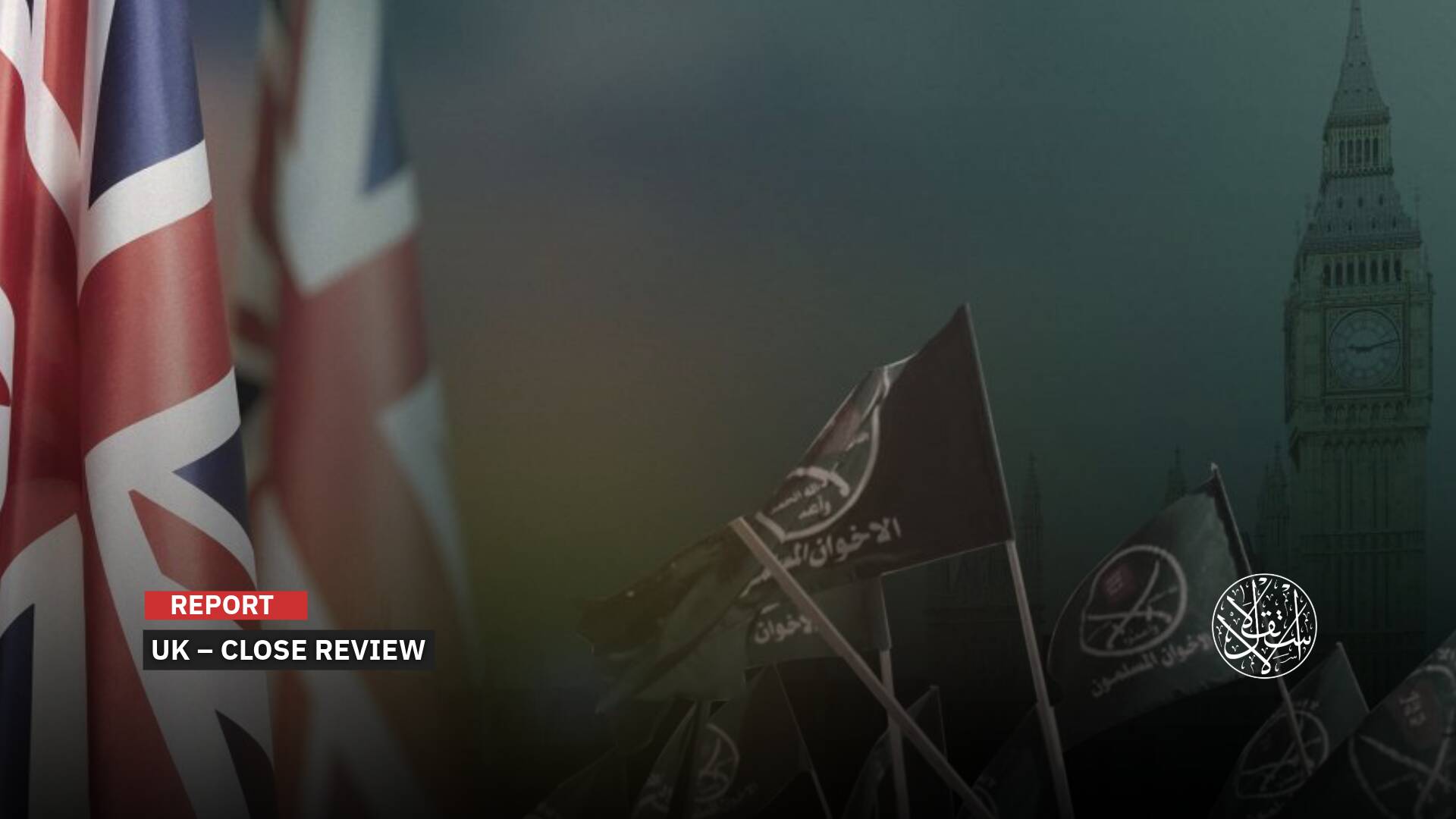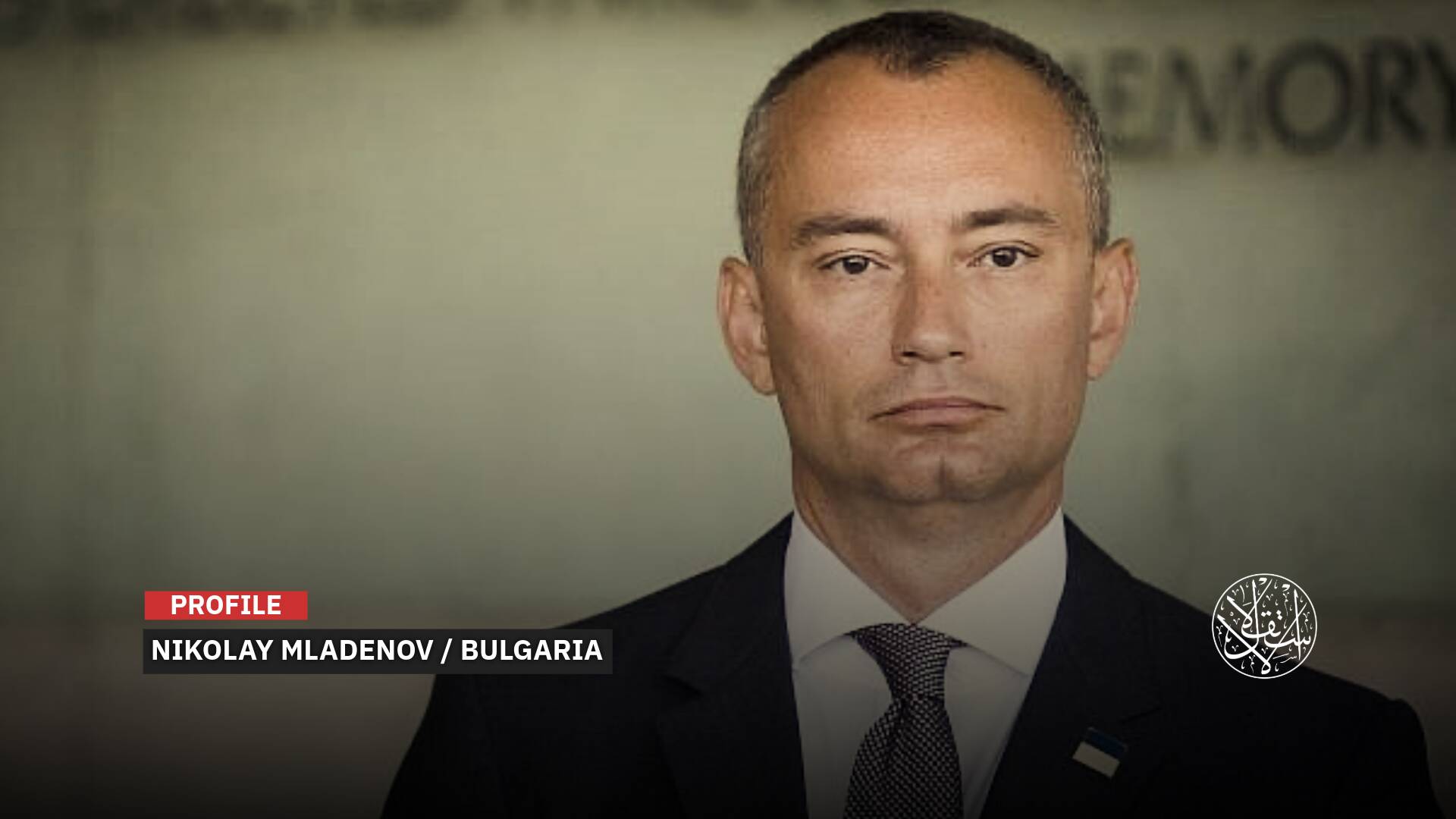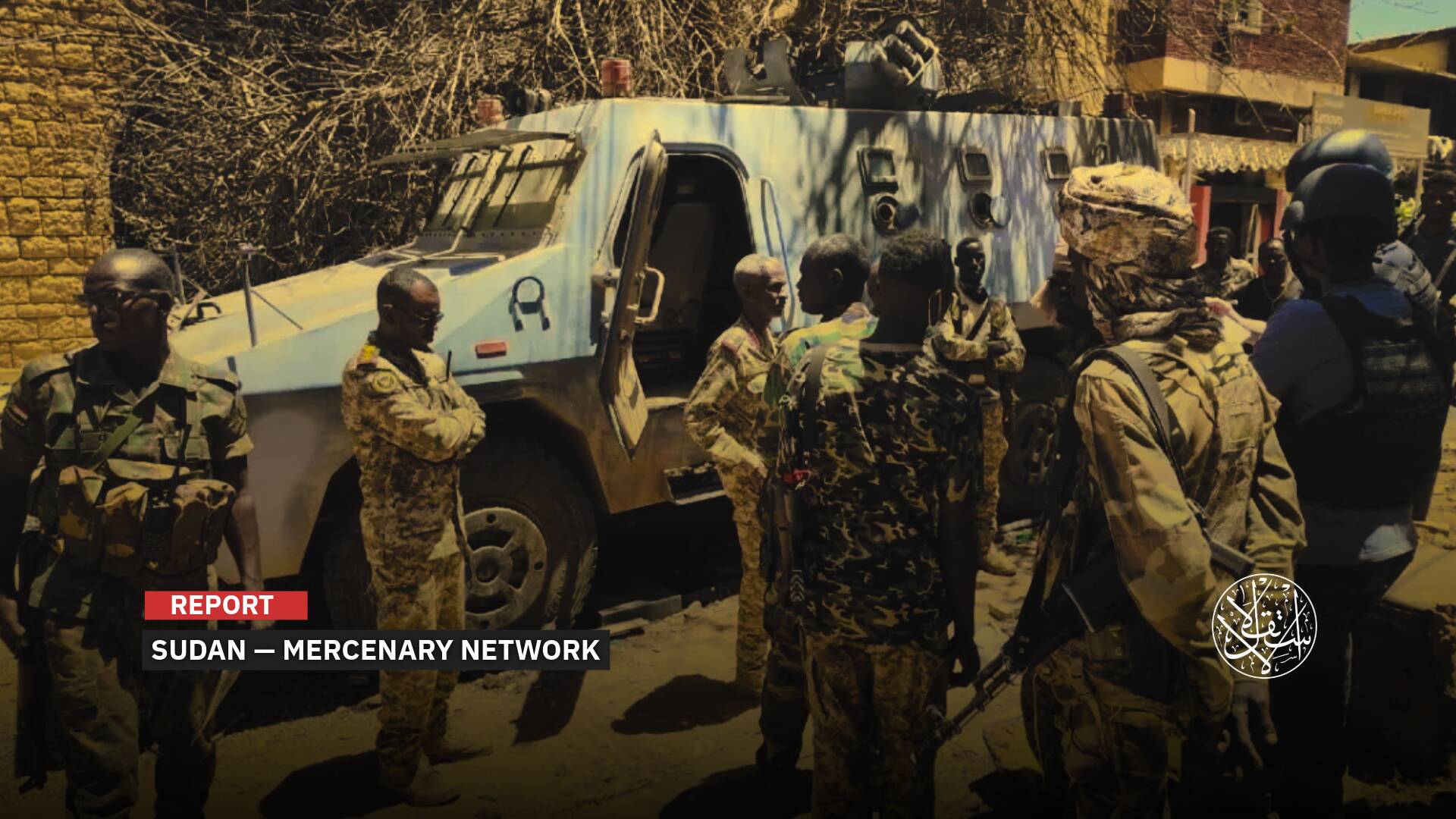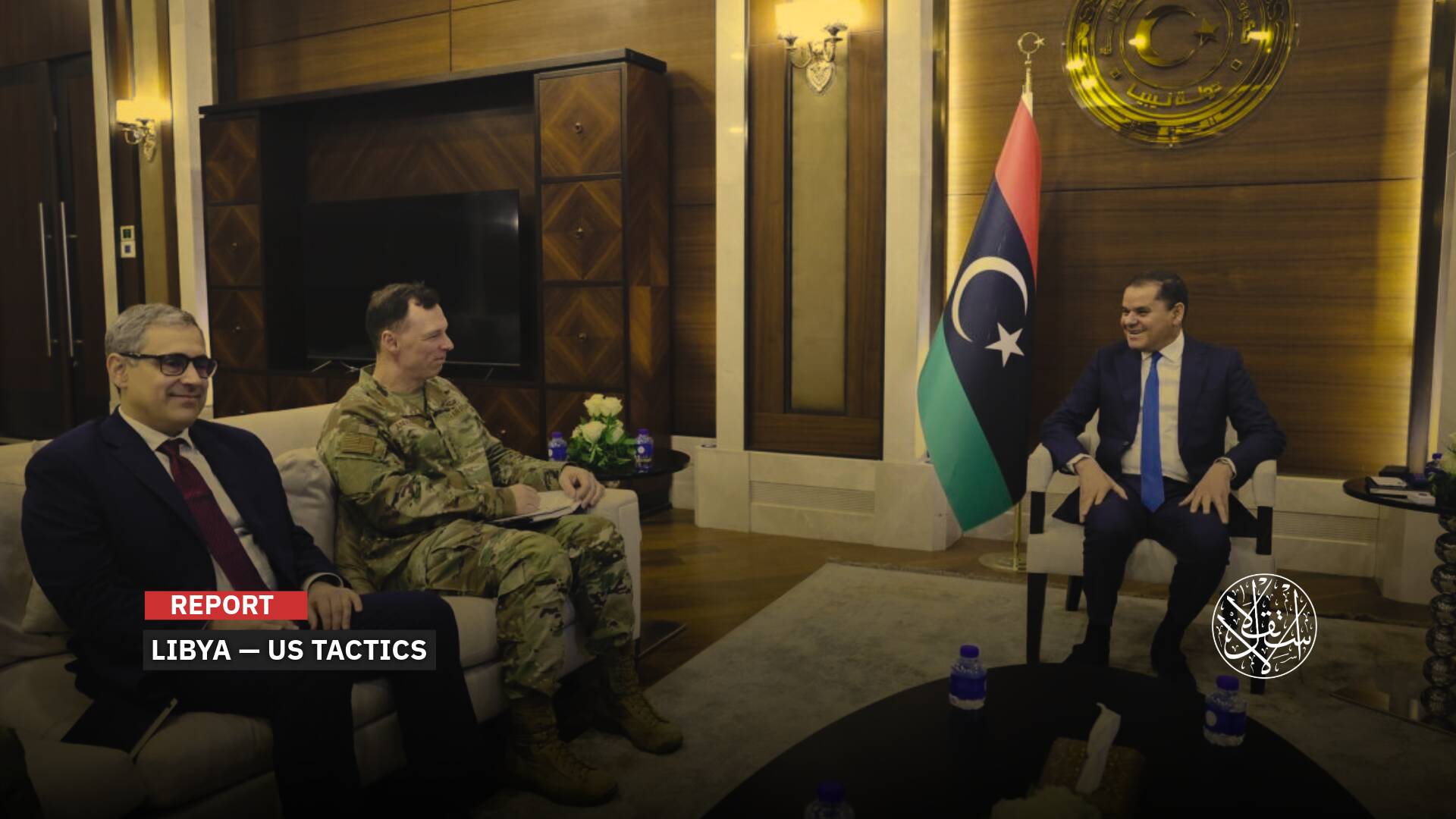Colonial Project: Inside ‘Israel’s Coalition for Regional Security' and the Role of Arab Leaders

This plan aims to establish lasting Israeli dominance in the region.
Just hours after the Israeli aggression on Iran ended and Benjamin Netanyahu spoke of “a new Israeli-led Middle East,” a campaign began promoting the so-called “Israeli Coalition for Regional Security,” which reportedly includes 10 Arab leaders, notably from Egypt and Saudi Arabia.
This coalition—backed by a large number of senior Israeli officials—launched an ad campaign calling for a new regional alliance between “Israel” and its neighbors, now that “the Iranian threat” has supposedly receded. The campaign predicts that new regional partnerships are on the horizon.
Billboards appeared in public squares showing Arab rulers, including head of the Egyptian regime Abdel Fattah el-Sisi and Gulf leaders, standing behind Netanyahu and U.S. President Donald Trump under banners reading “Abraham Shield Plan” and “Coalition for Regional Security.”
What’s the Story?
According to Israeli analysis, the coalition, heavily advertised across Tel Aviv buildings, marks an attempt to launch a new Middle Eastern alliance led by “Israel,” following its claims of “victory” in Gaza, Lebanon, and Iran.
Hebrew media reports say over 100 prominent Israeli figures and officials are leading “the initiative,” aiming to move from a phase where Arab leaders simply “served” Israeli interests to one of full normalization and alliance-building.
This coincided with a statement by Trump’s Middle East envoy, Steve Witkoff, who told CNBC that the Trump administration expects major announcements soon about new countries joining the Abraham Accords.
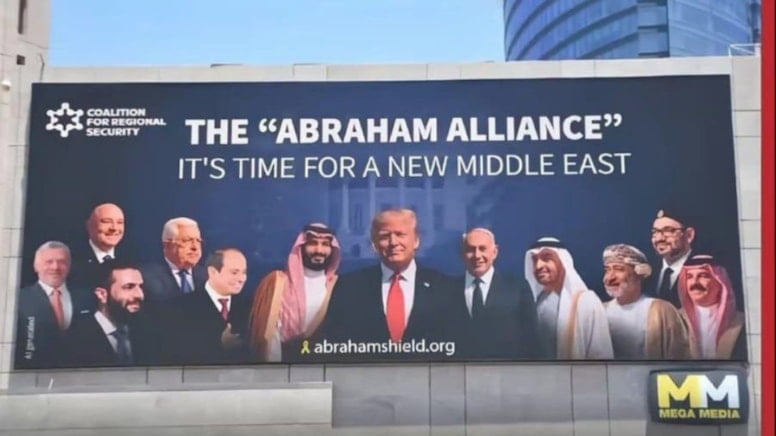
The posters featured UAE, Bahrain, Oman, and Moroccan leaders standing beside Netanyahu, with Saudi Crown Prince Mohammed bin Salman and el-Sisi next to Trump. Also shown were Palestinian President Mahmoud Abbas, Jordan’s King Abdullah II—and, more surprisingly, Lebanon’s President Joseph Aoun and Syria’s President Ahmed al-Sharaa.
Trump had stated in March 2025 that more countries were looking to join the Abraham Accords, originally brokered by his administration in 2020 during his first term.
“You’re going to see countries start to fill up the Abraham Accords.”
‘Abraham Shield’
According to statements published by the Israeli-led “Coalition for Regional Security,” which spearheaded the billboard campaign promoting the normalization drive between “Israel” and Arab states, the goal is to rebuild the “State of Israel as a Jewish-Zionist democratic homeland” in the coming years.
The coalition claims this will be achieved through “a measured and intelligent analysis of the regional map, its risks and opportunities while combining military, political, and economic power.”
“The State of Israel will leverage its strength and entrepreneurial innovation to build a ‘new regional order’: shaping a safe and prosperous national and regional future for its citizens.”
Under the headline “The Abraham Shield Plan,” the coalition describes “the initiative” as a blueprint for creating a new regional order that ensures Israel’s security.”
It bills itself as “a new Israeli political-security “initiative” that paves the way for the State of Israel to emerge from wars of attrition to a reality of security, stability, and prosperity – based on the current regional opportunity.”
“Israel’s historic military achievements have proven, beyond a shadow of a doubt, to both its enemies and regional partners that the State of Israel is a powerful and deterrent regional player - one that will not hesitate to use its great power to pursue its enemies,” the coalition stated.
“Now, the historic mission of the State of Israel is to translate its tremendous military achievements into a political turning point. One that will break the Iranian stranglehold, leverage the current regional opportunity, and create a new regional order in the Middle East.”
The coalition also outlined key components of its regional blueprint, which includes what it called a “declaration of a gradual, responsible, secure path of separation from the Palestinians within a decade, as part of a comprehensive regional agreement.”
Other elements of the plan include leveraging regional powers to stabilize Syria and transform it into a “buffer zone” against the Iranian axis; deepening the so-called “moderate regional alliance” through renewed normalization with Saudi Arabia; and expanding the Abraham Accords.
A top priority, the coalition stated, is “to prevent Iran from re-establishing itself in Syria, to deepen the ‘buffer’ between Syria and the Iranian axis, and to support a new, responsible, and stable Syrian government that may lead to a new era in relations between the countries in the future.”
Why Now?
The Media Line on June 22, 2025, explained the sudden revival of the “Abraham Shield” plan. According to the investigation, it follows the nearing end of the Israeli genocide on Gaza and the conclusion of the war on Iran, which left Tehran “weakened.”
The report noted that Israeli strategists were preparing to roll out a new regional doctrine “on the day after” the first group of Israeli captives is released under the current ceasefire deal.
It revealed that the Coalition for Regional Security had already submitted its “Abraham Shield” plan to the U.S. President Donald Trump, calling it a roadmap for “Middle East security and prosperity.” The strategy promises to “to stabilize the Middle East, neutralize regional threats, and secure lasting peace and prosperity for Israel and the region.”
“The initiative,” formed by five Israeli figures—Dekel, Lianne Pollak-David, Koby Huberman, Moty Cristal, and Attila Somfalvi—focuses primarily on Israeli security, regional order, and economic opportunities, with the goal of ensuring stability and long-term peace for the region.
One of the coalition’s founders, Lianne Pollak-David—a former advisor at Israeli National Security Council—told The Media Line, “Our goal is to turn Israel’s impressive military gains during the war into a new regional order.”
The plan proposes installing a technocratic government in Gaza to oversee reconstruction and deliver basic services, with Egypt and Jordan managing internal security through a coordinated policing system.
Writer Thomas Keith summarized “the initiative” on X (formerly Twitter) as a blueprint for permanent Israeli dominance in the region; an architectural plan for post-sovereignty. He argued that it rebrands invasion as reform, ethnic erasure as stability, and colonial containment as regional security.
Keith described the so-called “moderate regional alliance” as a euphemism for an Arab NATO, with “Israel” at its core and the U.S. acting as the quiet force behind it.
He warned that the plan aims to outsource the punishment of Palestinian Resistance to Gulf states, entrench Egypt and Jordan as regional enforcers, and incentivize “Arab regimes” to comply with “Israel” through massive financial, technological, and commercial incentives.
“The Abraham Shield” is ideological hegemony wrapped in diplomacy, enforced through the lure of funding and digital control.
It imagines a Middle East where Palestine exists only as a security vacuum to be filled, Iran is sanctioned into collapse, and Arab countries become logistic corridors and policing zones, according to Keith.
“Israel,” as the unspoken sovereign power, would set the rules and redraw the region’s borders.
Israeli reports claimed that the “Abraham Accords” would be expanded to include formal recognition of “Israel” by Syria, Saudi Arabia, and other Arab and Muslim nations.
In return, “Israel” would express a willingness to pursue a future resolution to its aggression against the Palestinians under the framework of a “two-state solution.”

A ‘Grand Bargain’
On June 26, several major Israeli outlets—Kan 11, Walla, Israel Hayom, and Yedioth Ahronoth—reported that Netanyahu and Trump are expected to strike a deal that would end the Israeli Occupation war on Gaza, secure U.S. recognition of “Israeli sovereignty” over parts of the West Bank, and pave the way for sweeping regional normalization.
Described as a “grand bargain,” the plan reportedly includes ending the war on Gaza, securing the release of Israeli captives, and pushing forward normalization with additional Arab states.
In a video statement released the same day, Netanyahu said, “This victory presents an opportunity for a dramatic widening of peace agreements. We are working on this with enthusiasm.”
“Alongside the freeing of hostages and defeat of Hamas, there is a window of opportunity that must not be missed. We cannot waste even a single day.”
Channel 13 cited Israeli officials saying that high-stakes talks are underway, with Prime Minister Netanyahu expected to visit Washington soon. U.S. officials told Yedioth Ahronoth that intense efforts are being made to reach a breakthrough in the captives' negotiations, describing a “new momentum” following the aggression on Iran—though Hamas has denied any progress.
Israeli sources familiar with the negotiations indicated that no delegation was expected to be dispatched to Cairo or Doha, suggesting that Netanyahu was seeking to finalize the agreement at the highest political level. The deal, they implied, would not follow the usual format of direct negotiations with Hamas but would instead be shaped through top-level coordination involving Netanyahu, Trump, Whitkoff, and Israel’s Strategic Affairs Minister Ron Dermer.
According to those sources, the envisioned deal would go beyond a ceasefire and the release of around 50 hostages. It would also aim to expand the “Abraham Accords”—Trump’s top priority.
Israel Hayom reported that shortly after the U.S. attack on Iran’s nuclear facilities, a four-way call took place between Trump, his Secretary of State Marco Rubio, Netanyahu, and Dermer.
A source familiar with the conversation told the paper that Trump and Netanyahu are working to accelerate new “peace deals” with Arab countries as part of a broader expansion of the “Abraham Accords.”
According to Israel Hayom, the draft deal includes ending the war on Gaza within two weeks, replacing Hamas’s control of the Strip with an Arab-led administration involving four countries (including Egypt and the UAE), relocating remaining Hamas leaders abroad, and freeing Israeli captives.
Other proposed elements—based on Israeli and American aspirations rejected by Hamas—include resettling large numbers of Gazans “willing to emigrate” to third countries, broader normalization with Arab and Muslim nations including Syria and Saudi Arabia, and formal recognition of the Israeli Occupation.
In return for U.S. recognition of certain “Israeli claims” in the West Bank, “Israel” would signal conditional openness to a future “two-state solution”—dependent on “reforms” within the Palestinian Authority.
Why Syria?
One of the paradoxes of the newly announced Israeli “Coalition for Regional Security” was a promotional poster circulated in Tel Aviv featuring ten Arab leaders—mostly from countries that have normalized ties with “Israel”—where Ahmed al-Sharaa appeared as one of the supposed participants in normalization.
Al-Sharaa’s presence on a poster in “Israel” alongside Arab leaders linked to the Abraham Accords raised eyebrows, especially given that Syria, which the same Israeli source lists as a supporter of Hamas, has not signed any normalization agreement and continues to face Israeli Occupation attacks.
Qatar’s Emir Tamim bin Hamad was notably absent from the poster, as was Turkish President Recep Tayyip Erdogan—both countries considered supporters of Hamas. So why was Syrian President Ahmed al-Sharaa the only one featured?
What’s striking is that the Israeli coalition didn’t stop at showcasing al-Sharaa alongside Arab normalization leaders; before and after, “Israel” launched a campaign claiming that Syria’s new president allowed the Israeli Occupation to use Syrian airspace to strike Iran.
This is despite the fact that Damascus lacks the real capability to prevent Israeli aircraft from using its airspace, especially since “Israel” has also used the airspace over Iraq and Jordan for such operations.
In a piece published on June 26 under the headline “Every blow to Iran is a benefit,” The Jerusalem Post implied that Syrian President Ahmed al-Sharaa had tacitly approved the Israeli strikes on Iran by allowing Israeli warplanes to pass through Syrian airspace.
Simultaneously, other Israeli media outlets circulated reports suggesting Syria was on the path to normalization with Tel Aviv, with claims that al-Sharaa was willing to “give up the Golan Heights.”
Yedioth Ahronoth reported the same day that “Israel” and Syria are preparing to normalize relations, and alleged that the anticipated agreement would include formal Israeli sovereignty over the Golan Heights. The report went as far as to suggest that, under the deal, “Israel” would help preserve and stabilize the Syrian government.
These reports align with Trump’s broader vision of leveraging recent diplomatic developments to counter Iran and expand the “Abraham Accords” to include Lebanon and Syria, aiming for a sweeping and sustainable normalization across the region.
During a meeting with Assad in Saudi Arabia in May 2025, Trump reportedly encouraged him to join the “Abraham Accords.” Al-Sharaa, however, told local leaders in Quneitra and the Golan on June 24, 2025, that he is working to halt Israeli aggression through “indirect negotiations.”
Sources
- The Abraham Shield Plan
- Israel’s Coalition for Regional Security Unveils Abraham Shield Plan
- Netanyahu sees Israel peace efforts expanding after war with Iran
- 'Every blow to Iran is a benefit': Why Syria allowed Israel bypass its airspace to strike Iran
- Syria to hold indirect negotiations via mediators to stop Israeli aggression
- In Israel, a picture of Mohammed bin Salman and Sisi was raised with Trump and eight Arab leaders. This is what was written in Hebrew [Arabic]
- Arab leaders on a billboard in the heart of Tel Aviv: a new call for the Abraham Accords [Arabic]
- Israeli cabinet to discuss partial deal, temporary ceasefire




